If you want to know how to become a full-time freelance writer, I don’t pretend to have all the answers. But I can share with you how I was able to make that happen in less than 1 year…7 months to be exact. Here’s how it all went down.
After spending a decade as a pastor, I realized in May of 2018 that I was ready to make a drastic career change into personal finance. I considered all kinds of ideas from earning my CFP, to becoming a financial coach, to becoming a credit counselor.
But I finally settled on writing.
I love to read and I’ve learned so much about personal finance by reading personal finance content on blogs and websites. I asked myself:
“Why can’t I be the one helping people learn how to handle their money through writing?”
I decided to try. But I made a commitment to myself. In one year’s time, I was going to have a day job where I was teaching people about personal finance, whether that job was a writing job or not.
So I set a deadline for myself. If I hadn’t figured out a way by May 2019 to make enough money as a writer to pay the bills, I would get certified as a teacher and teach economics at a local high school.
I landed my first writing client in November, 2018. Fast forward to today, May 2019, and I just quit my day job — 7 months after landing my first client.
In 7 months, I was able to create a full-time income in a career that I previously had no experience in. Below, I’ll show you how I was able to make that happen.
Let me clear — I don’t claim to be a “freelance writing expert.” There are tons of people with more professional writing experience than me.
But if you’ve always dreamed of dropping the 9-5 and becoming a full-time freelance writer instead, these are simply the steps that one regular dude took to get there.
1. Find a niche.
Some people would maybe tell you that if you want to become a full-time writer, you should apply for whatever jobs you can on Upwork or Freelancer.
I personally disagree.
I have no problem with a writer eventually having a few different niches. But I personally recommend that you start with one.
For me, my primary niche is personal finance.
Picking my niche was rather easy. The whole reason that I got into writing in the first place was that I’m passionate about helping people win with money. I can nerd out all day talking to people about budgeting, getting out of debt, investing, and taking advantage of credit card rewards.
Whatever you are most passionate about and/or most knowledgeable about should be the niche that you start with.
We’ll talk later about how to branch into new niches. But for now, start with one.
If you’re feeling really torn between two niches, then maybe you can consider which niche has more blogs and websites that cover it. For instance, if you’re two favorite niches are technology and scrapbooking, and you’re not sure which one to pick — go with tech.
Why? Because tech probably has 100 times the number of sites that are devoted entirely to covering it.
And more sites means more opportunities to find an editor that has a need for a new writer.
2. Start your own blog.
So I told you that I became a full-time writer in 7 months after landing my first client in November 2018 (right after attending a blogger’s conference that I’ll talk more about later).
But I also told you in my introduction that I decided I wanted to become a writer in May of 2018. And I should clarify that I didn’t even send out one pitch or Letter of Introduction (LOI) from May to November.
So what gives? What was I doing all that time? Just chilling until the right opportunity popped up?
No. I was learning how in the heck to start my own blog. And then working like crazy to fill it with content.
I knew that if I was going to have any chance of landing work at the conference that I was planning to attend in September, I needed some way to prove to potential clients that I could write. That’s where my blog came into play.
I had no idea…let me repeat, NO idea how to start a website.
But I was determined to find out. And this “How to Make a WordPress Site” guide from WPBeginner and the accompanying video below were a huge help to me.
Armed with this little bit of knowledge, I dove in headfirst.
I purchased my domain name and a web hosting plan. Then I created a cheap logo using some “auto-generated” logo tool online. I purchased a WordPress theme that I thought looked cool and I was on my way.
Did I run into roadblocks? Yes, a TON. But through a bunch of Googling and YouTubing, I slowly figured things out.
But everything that I learned turned out to be invaluable later on. Like 90% of all the blogs that you may write for someday will have WordPress sites. And many of them may want you to actually create your post from inside their WordPress dashboard.
Better for you to figure things out on your OWN WordPress site, then on somebody else’s site.
I’ve surprisingly learned that clients aren’t fans of their websites being broken by writers who are supposed to be making their lives easier.
3. Take a writing course.
When I was at the blogger’s conference that I’ll talk about next, I met Lance Cothern from Money Manifesto who was already a full-time freelance writer.
When I asked him how I could replicate his success, he had one piece of advice for me. He recommended that I take Holly Johnson’s Earn More Writing Course.
That turned out to be one of the best pieces of advice I’ve ever received.
I learned SO much about the ins and outs of what it takes to make it as a professional writer, like how to send professional pitches, network effectively, source my articles, invoice, raise my rates over time, and so much more.
Since taking Holly’s course, I’ve also successfully built a 6-figure freelance writing business. And I recently launched a course of my own with one of my favorite editors, Ashley Barnett, called Freelance Writing For Bloggers.
I’m so excited about the course because Ashley and I go deep into what it takes to land freelance clients (and keep them happy) from both the writer AND the editor’s perspective. And the course content is designed to help anyone who wants to make make money with freelance writing, not just bloggers.
Other freelance writing course options
I truly believe that my freelance writing course or Holly’s course are two of the best options available online today. But, in the spirit of fairness, I wanted to make sure that I gave you some other course options to look into as well.
Although I can’t personally vouch for any of the courses below, I have heard others talk highly of them and they are all popular. I’m sure any of these choices would be great.
- The Freelance Writer’s Den
- Get Paid to Write for Blogs
- Make a Living Writing
- Write Your Way to Your First $1k
- Creative Freelancing Freedom
- Travel Writing
Before choosing any course, I definitely recommend that you do your research.
See what each course has to offer and check out online reviews. Then go with whichever course you think would help you the most.
4. Become a social butterfly.
I have a confession to make. While I can across as outgoing at group events, at my core, I’m an introvert.
I’m a fairly private person who doesn’t require huge amounts of social interaction. As long as I’ve got my wife and my kids to spend time with, I’m usually pretty content.
And I’ve NEVER been a social media guy. Until about 7 months ago, I didn’t even have a Twitter or Pinterest account and hadn’t posted on Facebook in probably like 5 years.
But although I’m not by nature a social person, I did a couple of things to go outside my comfort zone.
Conferences
The first thing was to attend FinCon, a personal finance media conference.
When I bought my tickets to go to FinCon, I had no idea that I’d end up getting to pitch myself to over 20 editors from publications and sites of all sizes during their “freelance marketplace.”
This 20-minute span of time alone probably helped me gain more traction as a writer than I could have gained from 2 years of cold pitches. Meeting people face to face is such a huge advantage. A face is so much easier to remember (or perhaps “not forget” would be a better way to put it) than an email address.
No matter which niche you’re wanting to break into, get online and do research to see if there are any conferences for writers in your specific niche. If you want to write about fitness, try to find a “fitness bloggers” conference. If you want to write about technology, then you should try to find a tech bloggers conference.
They key is that you have to get out there and meet people. I can’t emphasize this enough.
Since attending FinCon, nearly ever client I’ve landed has been a result in some way or form from connections that I made there.
And 90% of my clients have approached ME instead of me having to reach out to them with pitches.
Why? Because editors talk to editors.
More about that later.
Social Media
As mentioned above, I used to be the most inactive social media person you’ve ever met. And I was perfectly happy with living my life that way.
But when I took Holly Porter Johnson’s Earn More Writing course, it helped me see the value that social media can bring to you as a professional writer.
She taught that if you follow people or retweet their content they often times will follow you back and/or share your content as well.
And guess what? She was right! Be nice to people and they’ll very often be nice back.
I went from 3 followers on Twitter to over 500 in the span of less than a month just by following other people, liking their content, commenting and sharing.
I made a commitment to spend at least 10 minutes each day on all my professional accounts just staying “active” and connecting with other bloggers and influencers.
It was hard for me to get out of my comfort zone and become a social network-y person. But it really works.
The overall key is that you want to try to become part of the writing community in whichever niche you hope to write in some day.
This will help you a million times when you send pitches later on because they’ll be “warm” pitches instead of cold ones. Editors are much more likely to respond to your pitch when they already know your name and are familiar with what you do.
And through social networking, you can literally get on every editor’s radar, even ones from the largest and most prestigious publications.
Social media platforms are one of the greatest “playing field levelers” to ever happen to professional networking.
And you need to be taking advantage of them.
5. Say “yes” to (just about) everything.
I was fresh off the excitement of meeting tons of editors at FinCon and I couldn’t’ wait to start sending follow-up emails to everyone.
I did just that. And then I waited…and waited…and waited.
A couple of weeks went by and nothing materialized. Not even a “we’re not interested right now” reply. Needless to say, I was bummed.
But finally, I got my “big break” and was offered to write a test article for a personal finance website. I was told that the website was rather new so they could only pay…wait for it…5 cents a word.
Yep, that’s right, 5 cents a word. My response?
Hi (editor’s name),
Yes, I am very interested! I am just getting started as a freelance writer, so I am trying to get as much writing experience under my belt as possible. I will work hard and, I believe, provide excellent content for you as well.
Would you like me to submit some pitches or do you already have topics in mind that you would like covered? If you should need to discuss any details over the phone, my number is xxx-xxx-xxxx.
Thank you again and I look forward to hearing from you again soon!
Sincerely,Clint
Yes, that’s right. I literally jumped at the chance to get paid $50 per 1,000 words.
But here’s the thing: The client who owned this smaller site also owned a much larger and very well known personal finance site and he is super connected in the personal finance world. It was worth it to me to get the experience and build up a good reputation with him because I knew it could lead to other gigs.
Even though I wasn’t writing for his big site I wouldn’t tell people that in pitches. I would just say “I currently write for (website owner’s name).”
And as it turns out, three of my following clients (who all paid much better), came my way as a direct result of my relationship with this first client.
So I can only speak from my experience (and I’m sure some would disagree with me on this) but I would say if you get an offer early-on from a well-known site or person, just say yes regardless of pay.
There will be plenty of time to be picky later.
6. Make yourself indispensable to your editors.
If there’s ONE thing that every writer needs to understand it’s this.
Editors are people too!
Editors are often dealing with crushing workloads, they’re having to manage the timelines of numerous assignments simultaneously and they’re just plain overworked and tired.
And guess what they love? A writer who makes their life easier.
If you can do that, you will become indispensable to an editor. Your goal as a writer should be to make an editor feel like they can’t possibly afford to lose you because if they did, your replacement would cause them so much extra work and frustration.
Out of all the other things that I’ll talk about in this guide, this is by far the most important. If you can just get this one thing down, I can just about guarantee that you’ll make it as a writer…even if you’re not as skilled a writer as others may be.
So how do you become an “editor’s pet?” Here are some things that you’re going to want to do.
Meet your deadlines.
NEVER be late on a deadline. Like never.
And if you are going to be late, make sure to let your editors know well ahead of time and give them the reason why you need the deadline extended.
You know what, on second thought, never mind. Just don’t be late on a deadline.
Learn what they like and what they don’t.
Early on in a relationship with an editor, you’ll be able to tell what kinds of things they’re looking for in an article and what they’re really not into if you pay attention.
With one of my clients, I once put in a ton of extra work to add in a bunch of screenshots on a piece. I thought that the editor would be super proud of my labor. But instead, she emailed back and asked if I could take the majority of them out because she felt like screenshots and other images slow down page load times.
Guess what? I never added a screenshot again for any article that I submitted to her.
But on the other hand, I have another editor who LOVES screenshots. So whenever I can, I add them in for her. With this same editor, she once asked me to try to find a Ted Talk clip that would go along well with the article topic.
I tucked that little nugget away in the back of my mind. For a later article, I sent her this email:
And guess what? She kept it and since then I’ve tried to add YouTube clips as often as possible into articles that I’ve sent her way.
It’s little things like this that make a big difference with editors and help set you apart from other writers.
Also, keep in mind that 90% of your clients will have some sort of “style guide” for their blog that covers things like how they want articles formatted, how to structure introductions and conclusions, how to link to other articles, and more.
Make sure you read the style guide…twice!
Yes, editors know that you’re dealing with a lot of different sites and they will tend to be understanding if you forget something from the style guide. But they don’t want it to be a regular occurrence.
And when first-time writers follow everything in the style guide right off the bat, it’s super impressive and shows that you respect their wishes and are all about making them happy.
Be teachable.
It’s important that you don’t get offended when editors send you feedback. Instead, look at it as an opportunity to improve.
Once, I remember getting an email from someone who had been hired as a proofreader. Not long after she was hired, she sent me this message:
Now, until this point, I had been working with the main editor for this site. And it just so happens that she hadn’t once mentioned anything about sentence length issues to me.
So I could have easily gotten myself all worked up in a tizzy saying to myself, “Who does she think she is, coming on the scene out of nowhere and saying that my sentences are too long?”
And I’ll admit that for a moment I did feel a twinge of self-defensiveness. But after thinking about it for a little while, here’s the conclusion I came to.
She was right.
I did have a tendency to write sentences that were too long and this was an area that I could definitely improve. So here’s what I sent back.
And here’s the response that I received back.
By just responding with a teachable attitude, I was able to develop a positive relationship with someone instead of a negative one.
No one likes to work with someone who’s a know-it-all. But working with teachable people is like a breath of fresh air.
Be fresh air to your clients.
Fess up to your mistakes.
This one’s pretty simple in principle but can be harder in practice.
If you mess up, just own it, apologize for it, and move on.
Don’t try to make up lame excuses. People can see right through that.
Recently, one of my clients was holding a video conference meeting for all of the writers who worked for the site. I really enjoyed working for this client so it was a priority for me to be at the meeting.
But nonetheless, I somehow forgot about it. Just straight up forgot. To this moment, I have no idea how but I did.
I can’t even describe how terrible I felt. I was literally sick to my stomach.
After taking a few minutes to let the reality sink in that I really had done this and I wasn’t just having a bad dream, I started drafting an apology note to the team. Here’s what I said:
Was it embarrassing to have to send this to a bunch of people that I wanted to look up to me and think I was responsible? Absolutely.
But I really believe that in the long run people will respect you more for owning up to your mistakes instead of always offering up elaborate excuses for them.
7. Create a “hire me” page.
Once you’ve gotten a few paid writing gigs under your belt (or even guest posts), you’ll want to create a “hire me” page that includes links to your best work.
A “hire me” page is like the resume of the freelance writer. If you don’t have your own blog, then you’ll want to create a dedicated site to host your “hire me,” page.
If you do you have your own blog, you don’t need to make a separate site. Just make sure that your “hire me” page is highly visible on your site, preferably on the top bar.
Your “hire me” page doesn’t need to be elaborate. It just needs to briefly say what you do and then it needs to have links to your best (and, preferably, recent) work. As you land more work and get newer/better clips online, you’ll sometimes want to add new clips and delete old ones.
Here’s what my “hire me” page looks like.
Once you’ve created this page, you’ll want to include a link to it in all the pitches that you send to editors and add it to your LinkedIn bio as well.
8. Reach out to new clients (and ask for more work from your current ones).
I mentioned earlier that I’ve been able to land a ton of my clients through referrals.
And while that’s true, I don’t want to give you the impression that you’ll never need to send pitches. I still send some here and there to high-value clients that I’d love to land.
And when I use the word “pitches,” that’s not technically the correct term for what you’ll be sending to an editor when you’re looking for work. While the terms are sometimes used interchangeably online, a pitch is really an article idea.
I can only speak from my own experience, but I’ve had ZERO success sending pitches to random editors. I’m sure plenty of writers have. I just don’t happen to be one of them.
Now I do send tons of pitches to editors that I already work for, but that’s a whole different situation.
So while I tried sending pitches to potential clients at the beginning, I quickly ditched that strategy and switched to sending a letter of introduction (LOI) instead. An LOI is just a quick email that tells editors who you are, what you’ve done, and that you’re available to take on work if they have a need.
Here’s an LOI that I just sent 2 weeks ago through LinkedIn to the editor of a huge website that I really wanted to work for.
Hi (editor’s name),
Just wanted to say that I respect the work that you and your team does at (website name) and I would love to be part of your team as a freelance writer.
I currently write as a freelancer for Credit Karma, Student Loan Planner, Well Kept Wallet, and others. While I have a passion for all things personal finance, I happen to have a lot of experience writing about credit cards and student loans. Affiliate product reviews are another category that I enjoy.
I would be willing to write one trial article for you to demonstrate the excellence and attention to detail that I can provide to your team.
Below, are a few writing samples as well as a link to my “Hire Me” page.
- Spirit Airlines World Mastercard Review: https://www.creditkarma.com/credit-cards/i/spirit-airlines-credit-card/
- Surge Credit Card Review: https://www.creditkarma.com/credit-cards/i/surge-credit-card/
- Tally App Review: https://walletwiseguy.com/tally-an-app-designed-to-help-you-pay-down-debt/
- 10 Ways to Get Out of Student Loan Debt Faster: https://www.studentloanplanner.com/how-to-get-out-of-student-loan-debt/ SoFi Review: https://walletwiseguy.com/sofi-student-loan-refinancing-review/
- Hire Me Page: https://walletwiseguy.com/hire-me.html
If you need to hire a freelance writer now or sometime in the near future, I’d love to be your guy!
Thanks for your consideration,
Clint
I should note that while most of this LOI could be mostly copied and pasted and used with other editors, I did tailor a few comments here and there based on what I knew this particular website liked to write about. The same goes for how I chose which articles to include as samples.
That brings me to an important point:
Research your new clients well. Make sure you know what they’re all about before even thinking about crafting and sending your LOI.
Trust me this step is worth it. Just taking the extra 10 minutes to familiarize yourself with the kind of content a prospective client likes to create could be the difference in whether you do or don’t get the job.
In this case, I received this response just a few hours later.
Hi Clint, Thanks for reaching out! We’re always looking for great freelance writers. I have a standard “here’s how it works” email — what’s the best email to send it to? Thanks.
Boom, baby!
Now, will this always be the outcome of the LOIs that you send? Absolutely not. There will be plenty of times that you don’t get any response whatsoever.
Don’t get discouraged. Just stick with it and the law of averages will eventually swing in your favor.
Asking for more work
But reaching out to new clients isn’t the only way to land new work. Another way is by simply letting your current clients know that you have availability. Unexpected assignments come their way all the time and they have to decide who to offer the work to.
If you’ve let your editors know that you’re open to more work, you may be one of the first names that pop into their head.
When I was about 3 months out from going full-time as a writer, I send this kind of an email to all the editors that I was currently working for:
Hi (editors’ name),
Just wanted to let you know that I’ll be launching out as a full-time writer in May (yay!).
If you have extra writing work for any of the sites that you manage around that time, please keep me in mind!
Thanks!
Clint
After sending this to one editor, not only did she start sending me more work each month but she also referred two new clients my way!
9. Find ways to “branch” into new niches.
Way back at the beginning of this guide, I recommended that you start with one main niche. I just think this makes it easier for you to quickly become an “expert” in a particular field.
But here’s the good part. Over time, you can start to branch out into new niches very naturally. Let me explain using my own situation as an example.
As I mentioned earlier, my “primary” niche is personal finance. But it just so happens that I’m also pretty passionate about travel and technology.
Now if in the early days I had tried to market myself as a “personal finance, travel, and technology writer,” I honestly think it would have been difficult for me to get traction in any of these three categories.
Branching out
But over time, I’ve been assigned pieces for my personal finance clients around the idea of “how to save on travel.” So when I reach out to travel websites, l can say that I’ve written about travel and I’ll provide those links as proof.
And just like that, I’ve opened up a whole new category of websites that I can reach out to for work.
I’ve also been assigned articles like “X Apps to Save Money on Groceries,” “How to Get the Most Cash for Your Old Phone,” and “Most Affordable Laptops in 2019.
Guess what? I can use those links to send to tech websites if I ever want to branch into that niche.
Now, honestly, I don’t think I’d have the bandwidth to focus on 3 different categories. But long-term, I’d love for my articles to be fairly evenly distributed between personal finance and travel.
We’ll see how that works out over time.
10. Consistently raise your rates.
This piece began with me sharing that I accepted 5 cents a word for my first client.
Yeah, that never happened again.
With each new client I’ve added I’ve raised my rates by 5 cents a word. Honestly, my rates are still pretty affordable compared to other professional writers that I know. But I’ve only been doing this for 7 months.
I don’t expect to be getting paid the same amount that a 10-year freelance writing veteran gets paid. And you shouldn’t either.
But as I continue to add to my portfolio, I will continue to raise my rates.
Whenever you give a rate quote, you’re going to want to try to strike a balance between confidence and flexibility. Don’t ever apologize for the rates that you charge. But also make it clear that you have wiggle room if needed.
Here’s a response that I just sent to a new client who asked what I would charge him for a 1,500-word piece.
Hi (editor’s name)!
Yes, I’m always looking to take on some new clients! I appreciate (friend who referered me) giving you my name.
I generally charge X cents a word so that would be $XXX for a 1,500-word piece. But I’m willing to negotiate if those rates don’t work for you. I really respect the work that you do at (website name) and would love the opportunity to work for you.
Thanks so much for reaching out!
Clint
I’ve yet to have anyone take me up on the “negotiation” offer. But I still always say it as a courtesy and because I think it speaks “I really want to work for you!”
Raising rates on current clients
There’s one final thing that I should mention about raising rates. In her Earn More Writing course, Holly Porter Johnson recommends that writers raise their rates once a year.
I haven’t hit a year yet with any of clients so I can’t speak from experience on this one. But according to Holly and several other writers in the private Facebook group, this strategy works really well.
Conclusion:
Glancing down at the word count on this guide, I see that I’m over 5,000 words. Holy moly!
And guess what? I don’t feel tired one little bit. But I do feel like there are 5,000 more words that I could have written. That’s the kind of borderline maniacal love that I have for explaining things through the written word.
Does that sound like you? If so, you may have exactly what it takes to become a full-time freelance writer. Good luck!
Related: 5 Side Hustles That Could Become Your Full-Time Job


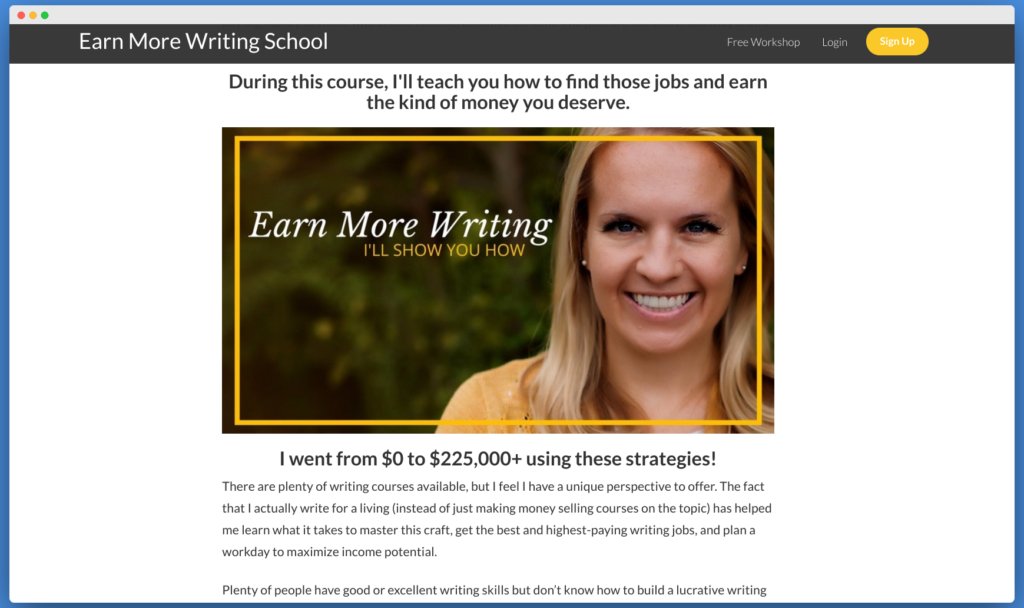
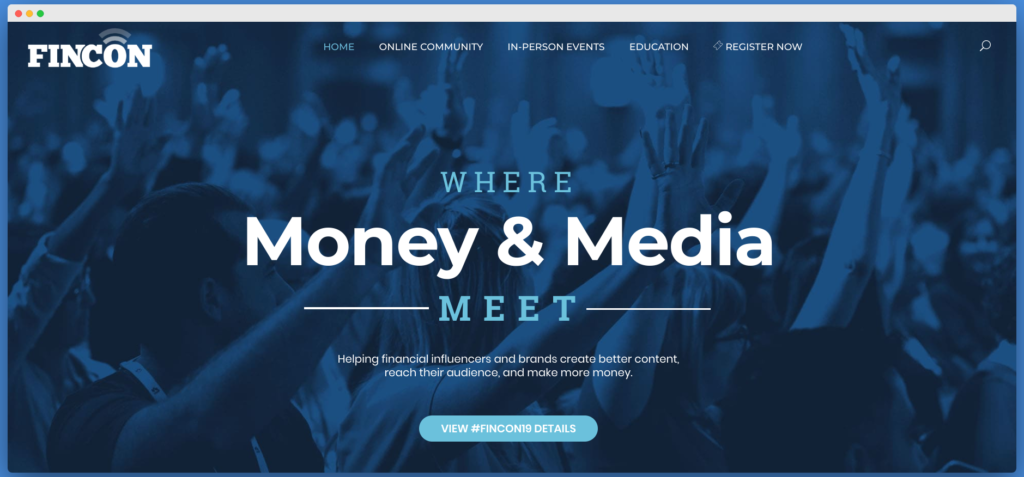


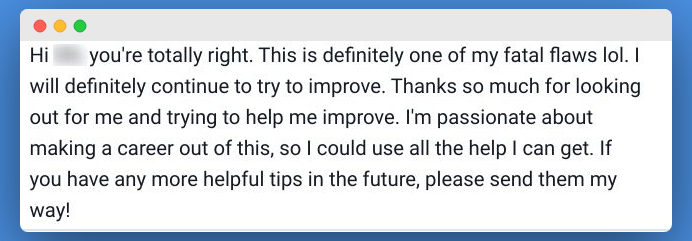


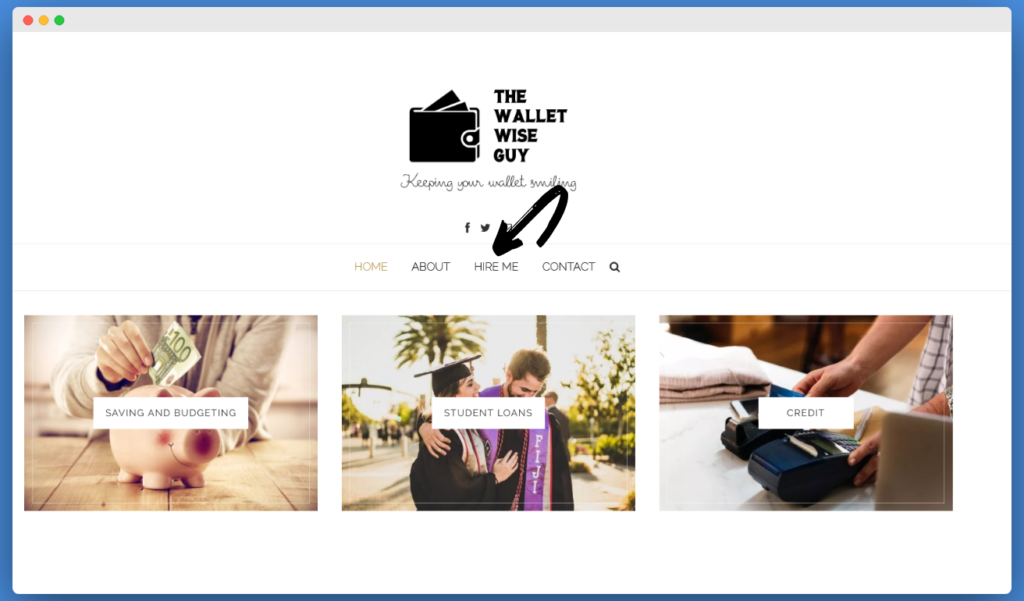
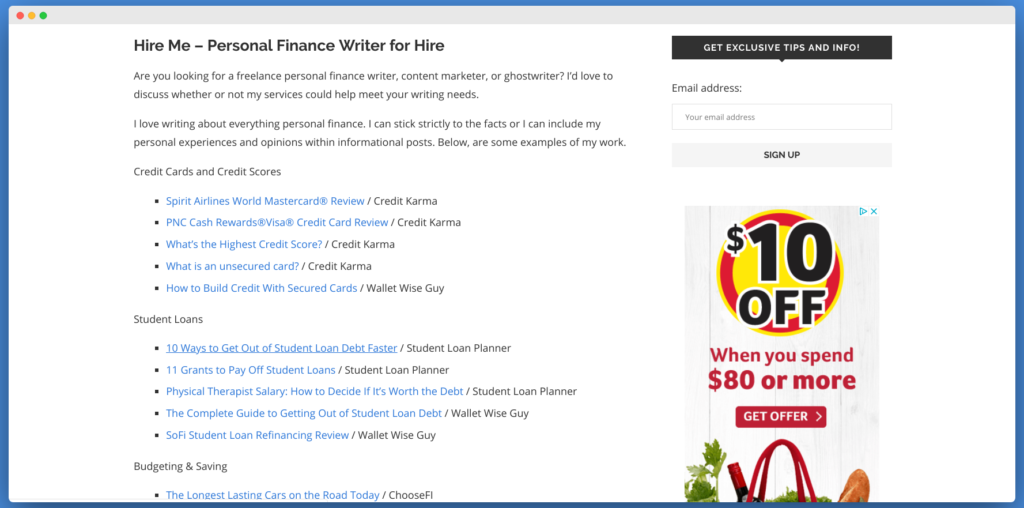
This was a great article, Clint! Super impressive you were able to turn freelancing into a full-time job within just seven months!
I’ve been doing freelance work for about six months, and I used my blog and social media to land my first client, so that’s definitely a great way to get started. I offered to do a post for cheap too, (or in my case, free lol) just to get my foot in the door, which was totally worth it, as it’s led to a long-term working relationship and over $1,500 worth of work.
These are all solid ideas to get into the freelance writing space. I know cause they’ve worked for me too!
Thanks, Shawn! That’s awesome that you were able to turn a guest post opportunity into a long-term client!
Just stopped by your blog and read your latest net worth article. Dude, you’re a side hustling workhorse! Total props to you man. You obviously have an amazing work ethic.
Thanks for reading the post 😀
Clint
You are truly an inspiration Clint. It was a great to have you as a writer and l am excited for what your future holds. Keep up the great work!
Thank you, Deacon! Thanks so much for helping me to get my start. You’re an awesome person to work for 🙂
I have just started my freelance writing journey. Like you, I chose to start a blog first so I am familiar with Wp and content creation. I am also doing Elna Cain’s Write your way to 1K course. You have inspired me to persevere. I would love to know how you manage your time to create content for your blog and work for your freelance writing clients. I find that to be most difficult to master. There are also chores and othee demands on my time that complicate matters. Thank you gor sharing your journey. It may have been 5000+ words but you had me glued to the end.
Hi Poovanesh, that’s awesome, I’ve heard a lot of great things about Elna’s course. Definitely, don’t quit! You can totally make this happen if you hang in there.
As far as finding time to balance my own content with freelance writing, it’s honestly super tough. The production flow of content on my site slowed WAAAY down when my freelance writing picked up. However, when I was writing as a side gig, I would write from 5-8 am, then go to my day job, then sometimes write again from 10pm-midnight. Now that I’m a full-time writer, I’ve tried to transition to doing a lot of the writing for my own blog early in the morning, since I’m already used to writing at that time.
However, there’s no doubt about it that it’s tough to juggle both and there are lots of mornings where that doesn’t happen. Ultimately, though, when push comes to shove, my freelance writing has to take priority.
At least for this season 🙂
Hands down one of the best articles I’ve read on becoming a freelance writer. Thanks for all the value you provided, Clint! Completely agree – going to FinCon and taking Holly’s course are two of the best investments I’ve made to date to launch my freelance writing career.
Thanks for the encouragement, Veneta! You’re an amazing writer so definitely means a lot.
Love this! It’s a great balance of a useful guide for anyone and your own personal story! I’m jumping into full-time freelance writing in two weeks when my teaching job ends. A little nervous but mostly excited to give it all I’ve got! Maybe I’ll see you at FinCon 2019!
That’s amazing, congrats!! Hope to see you at FinCon as well. Feel free to reach out if you ever need someone to bounce writing questions off of.
Thanks for sharing! Very inspiring story and tons of actionable content.
I also attended 2018 FinCon as my first one! At this point, my blog is just a hobby, but I have bookmarked this post for when/if I want to change that 🙂
Thanks for reading! Will you be attending FinCon again this year?
I will not. Got a scheduling conflict with my full time job. Hoping to attend 2020!
Ah too bad! Hope to meet you next year!
I’m so glad that you decided to tackle this topic on your podcast so that I could later find your blog post about it! This is such a great resource.
I have written in a dedicated manner with my blog for over a year now. As someone interested in dabbling with freelancing, this article was just the message I needed to hear.
Congrats on your success and I look forward to keeping track of your story while reading your work in major publications.
Thanks so much for the comment and I’m glad that the article was an encouragement to you to maybe give freelance writing a try. It’s definitely been an awesome thing for me. I love the freedom that it provides in addition to the income. I love that you’ve already been writing for over a year with your blog. As I mentioned in the podcast, that can really help with landing new writing gigs. Good luck!